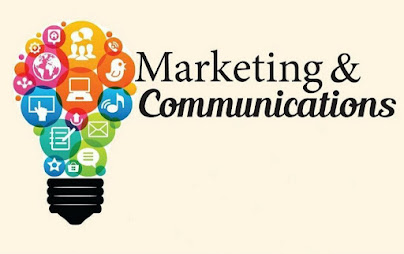The Secret of Successful ADVERTISING AND MARKETING COMMUNICATIONS
The Key to Profitable Marketing:
The Art of Thinking Backwards, Marty Longe, Umbrella Graphics, 2011, The key to a successful advertising program is to plan your campaign step by step in reverse and start at the end. You need to practice thinking backwards.
Engineers, painters, architects, inventors, and other creative minds have all used the same planning method. First, they imagined the end result and reversed digital marketing communication their steps until they got to step one. Then, they reversed the process until they reached their objective once they discovered their beginning.
Marketing and sales are no different. By providing an answer to this question, you must begin at your final destination: How does one define success? Step by step, working backward through the process to ensure you cover all bases up to Step 1, you plan your actions once you know where you want to go. You will then be prepared to begin marketing your goods and services.
Can your company function without marketing? Unfortunately, no. "Build it and they will come" is just a myth: a myth. Instead, you must search for customers on your own.
They are NOT lining up in a line in front of your door. They are concealed. Where are they now?
What are they? When you find them, what will you say to them? What will persuade them to act? Are you aware?
Advertising has a high cost. The significance for your company's success is crucial. This can't go wrong. But, it must be done correctly. You must begin at the end and discover your beginning. It is all or nothing, sinks or swim, passes or fails if you do not commit to your marketing strategy once you do.
The final action:
Define Ultimate Success How will you determine the success of your marketing efforts? How does success appear?
The following seems like a reasonable standard for almost any company:
"When NEW customers buy my products and services, continue to buy, and tell their friends to do the same, my advertising campaign is successful,"
To get people to buy it, more is needed. You want them to become frequent, devoted customers. In addition, you want them to be so enthralled by your products and services that they become outspoken advocates—walking billboards for your brand. What could be better than getting enthusiastic customers to promote your business for free?
For instance, I was one of the first customers of Apple. In 1985, I bought my first Mac. Since then, I have always bought from them; I want it if it has the Apple logo. However, I am also a committed salesperson. I use every opportunity to persuade people integrated communication to buy a "real" computer instead of their inferior PC.
I am an excellent illustration of the ultimate objective of advertising: converting a non-customer into an advocate for life.
That ought to also be your ultimate objective.
Step 10:
It is a fact that not all of your target customers will purchase your product. You only need to get your product in front of the people most likely to buy it. The only requirement is that your call to action—your sales pitch—resonates with your intended customer.
Who exactly is that?
For a consumer survey, you should hire a reputable marketing company. They could shape center gatherings and pre-test your item or
administration utilizing a cross-part of the purchasing public to decide the best-promoting approach expected to enter that market. It may be costly; However, it could also help you save a lot of time and money in the long run. The shotgun approach to advertising is less effective than targeting a specific demographic.
However, you could conduct your informal survey by speaking with as many potential customers as you can, asking them questions about your product, recording their responses, and analyzing the outcomes. It is the same procedure professionals use, but it is cheaper and less strategic. However, it can give you helpful information that you can use to improve your marketing strategy.
The objective is to respond to as many of these questions as possible: Who would be my ideal client? Old or young? Which gender is it? Economic standing? How do you shop? Liberal or conservative? Are they readers? Are they wary of new technology? What are their fears? What dissuades them? What attracts them? Which vocabulary or language will elicit a response? Etc., etc.
You ought to be able to respond to this question once you have completed your homework:
A hundred people from all over the world greet you as you enter the room. There are only three of them you can talk to. You can address them utilizing 20 words or less. What will you say to those three individuals to convince at least one to inquire further about your product?
Can you manage it? If you are unable to, you may not comprehend your customers.
It's possible that you do not know your product. How will they get it if you do not?
Step 9: Prepare Your Products and Services for Sale I'm curious how many times I have purchased something that should not have been sold at all. Selling something not ready to use is the fastest way to ruin your business.
A dissatisfied client is a disaster for public relations. They will join Facebook, and with a single click, they will spread the word about your failure brand communication worldwide. A negative review is the fastest way for word to get out. Nothing is more challenging to fix.
If you want to promote your business, make certain that the products you sell are fully functional. Does your item, as a matter of fact,
do what it professes to do? Is there a guarantee on it? Do you have a department for service? Are your employees prepared to respond to every inquiry? Can your website assist your clients?
Ensure your customers will not be let down; Ensure your product has been thoroughly tested and proven before releasing it. Nevertheless, events occur. Make it easy for them to get the help and support they need if they have a problem.
Only sell it if you can guarantee it.
Step 8: There is no such thing as a perfect plan. Instead, listen, analyze, reevaluate, and make adjustments. Stop, look, and listen to determine if your advertising campaign works. Are you getting the calls, sales, and returns you expected? Why not, if not? Have you looked at your website's statistics? Facebook? YouTube? Are there calls?
As you talk to your new customers, ask them: How did you learn about our company? What prompted you to call or purchase? Did anything you heard make sense to you? Misleading? Have you encountered any issues with our website? How is our service to customers? Would you like to be added to our email list? Are there any friends of yours who might be interested in our assistance?
This is your chance to gather feedback or to discover any issues.
Fix it right away if your message is unclear, if your publicity materials lack something, or if your website or another location has a glitch or disconnect.
A final note: Who is in charge of verifying the accuracy of your website and other social media sources? How frequently is it examined? Who is obligated to keep it current? Who will answer remarks/grievances on your
blog/Facebook/Twitter, and so forth.?
Your sales could be killed by inaccurate or incomplete information. Keep an eye on it.
Step 7: Utilize a Marketing Calendar One fundamental marketing principle is: You can't just tell people about your product once and expect them to buy it; Until you finally get someone to respond to your message, you have to keep telling them about it, frequently using multiple strategies.
Your main interest group resembles a colossal stone. Your marketing strategy is only a small tool. You really want to raise a ruckus around town over and over, tap, tap, tap, until the stone
breaks. The temptation is to attempt to enter the market with a single, powerful blow with a large hammer. You might miss your customers entirely or scare them away. It is more effective to communicate your brand identity, message, product, benefits, value-added features, and calls to action to them repeatedly, repeatedly, and repeatedly. Sometime in the not so distant future, you will
break the market.
However, you must execute it strategically. Not all at once, but over a longer period of time. It is also helpful to craft your message in a way that it develops over time, beginning with the fundamentals and expanding on them as you go. Your initial advertisement might be integrated marketing communication as straightforward as a single sentence and a picture. Toward the finish of your
crusade, you've developed the item in the purchaser's brain, enough to hold
their consideration so you can take care of them the all out pitch.
Not only do you need a calendar to plan when your ads will be released, but you also need one to plan how long it will take to prepare those ads. Writing, editing, designing, printing, making videos, sending mail, and other things



.png)
Comments
Post a Comment